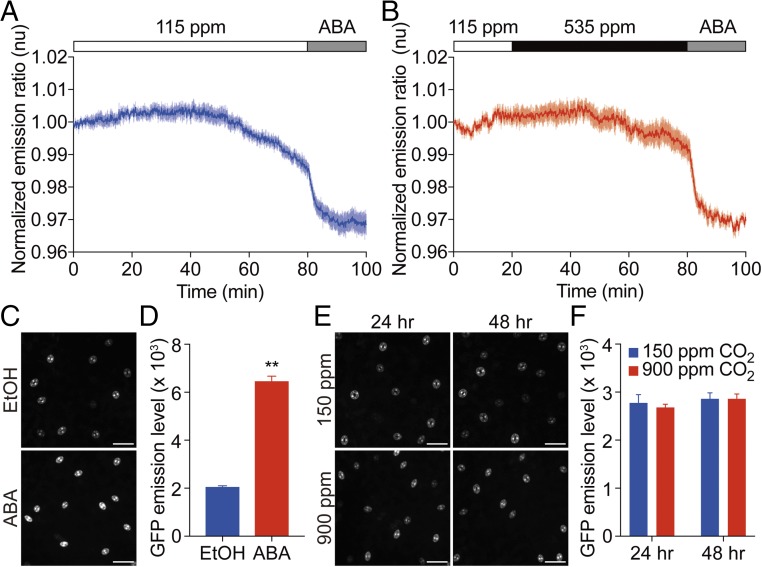Fig. 4.
CO2 does not rapidly elevate ABA concentration in guard cells. (A and B) Time-resolved ABAleon2.15 emission ratios in guard cells in response to CO2 changes and ABA application. Intact leaf epidermes were perfused with buffer containing 115 ppm CO2 or 535 ppm CO2 (21) and then switched to a 10 μM ABA containing buffer as indicated. Data in A and B are averages of normalized emission ratios each from six guard cells. Error bars represent SEM. (C) Representative images of pRAB18::GFP promoter reporter expression in guard cells in intact leaves in response to ABA or EtOH as control treatment. Rosette leaves of 4-wk-old plants were sprayed with 10 μM ABA or 0.01% EtOH solutions and observed after 24 h. (D) Average pRAB18::GFP promoter reporter. emission intensity in guard cells under the imposed treatments in C. (E) Representative images of pRAB18::GFP promoter reporter expression in guard cells in intact leaves in response to the indicated CO2 concentration treatments. Four-week-old plants were grown in a growth chamber at 150 ppm CO2 for 2 d and then either shifted to 900 ppm CO2 or maintained at 150 ppm CO2 for 24 and 48 h. (F) Average pRAB18::GFP promoter reporter emission intensities in guard cells under the imposed treatments in E. GFP intensities were calculated by averaging at least 50 pairs of guard cells in the fourth-youngest leaf of each plant. (Scale bar, 50 μm.) Data represent mean ± SEM. n = 6 plants for each treatment. **P < 0.01 by Student t test.

